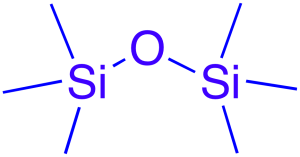MQ, VMQ, PMQ, FVMQ… What Does It All Mean?
Apr 9, 2019
 The world of silicone rubber is full of confusing acronyms. To an outsider, the names of some compounds can seem like a foreign language, potentially leading to confusion and misinterpretation. However, there are standardised names for the materials we use, as defined by the ISO. As such, it’s key that you’re familiar with these names and the properties of such materials in order to use the right variant for the job.
The world of silicone rubber is full of confusing acronyms. To an outsider, the names of some compounds can seem like a foreign language, potentially leading to confusion and misinterpretation. However, there are standardised names for the materials we use, as defined by the ISO. As such, it’s key that you’re familiar with these names and the properties of such materials in order to use the right variant for the job.
What types of silicone are there?
Silicone is widely used in a variety of industries, from food and medical to aerospace and more. It has amazing flexibility, low toxicity and excellent resistance to UV, oxygen, ozone and microbial growth.
For O ring materials, silicone has one of the greatest ranges of operating temperatures available. Standard silicone O rings are capable of handling temperatures from -60°C to 230°C, whereas specialist compounds can be made to reach as low as -100°C and as high as +300°C.
We’re going to look at four of these compounds in more detail today. Specifically, we’ll consider MQ, VMQ, PMQ and FVMQ to see what they are and what benefits they can bring to components.
MQ silicone
To give it its full name, this is methyl silicone, and is the simplest form of silicone compound . At a molecular level, it contains repeating units of oxygen, which gives it excellent resistance to ozone, as well as UV and general damage from weathering.
We don’t often use this type of silicone in this format, as it doesn’t have the best elastomeric properties. However, it is sometimes used as a base and them processed to improve performance.
VMQ silicone
This silicone is vinyl methyl silicone. It is produced by processing MQ silicone into a format where the methyl groups of molecules are replaced with vinyl ones. The resulting material has an impressive temperature range and better compression set than MQ. However, its poor tensile strength means it’s not suitable for some O ring fabrication.
PVMQ silicone
Also known as PVMQ, this is phenyl methyl silicone. With this compound, the methyl groups are replaced with phenyl groups, which dramatically improves the low operating temperatures of the material. In fact, PMQ silicones have almost a 100°C lower operating temperature than the equivalent MQ silicone, with a working temperature of -100°C.
FVMQ silicone
The final type has a more easily understood name: fluorosilicone. As with other fluorinated elastomers (FKM, FFKM etc.), adding fluorine at the molecular level results in stronger bonds. Stronger bonds mean fewer chemical reactions can take place, leaving us with a silicone with vastly better chemical resistance. Other properties of FVMQ silicone are similar to those seen in VMQ, although its hot air resistance is lower.
Clear as mud?
If you still feel confused about the types of silicone available for use, we’re here to help. Our friendly team are just a phone call away and can give you bespoke advice on the right material selection for your needs. Get in touch to find out more.
